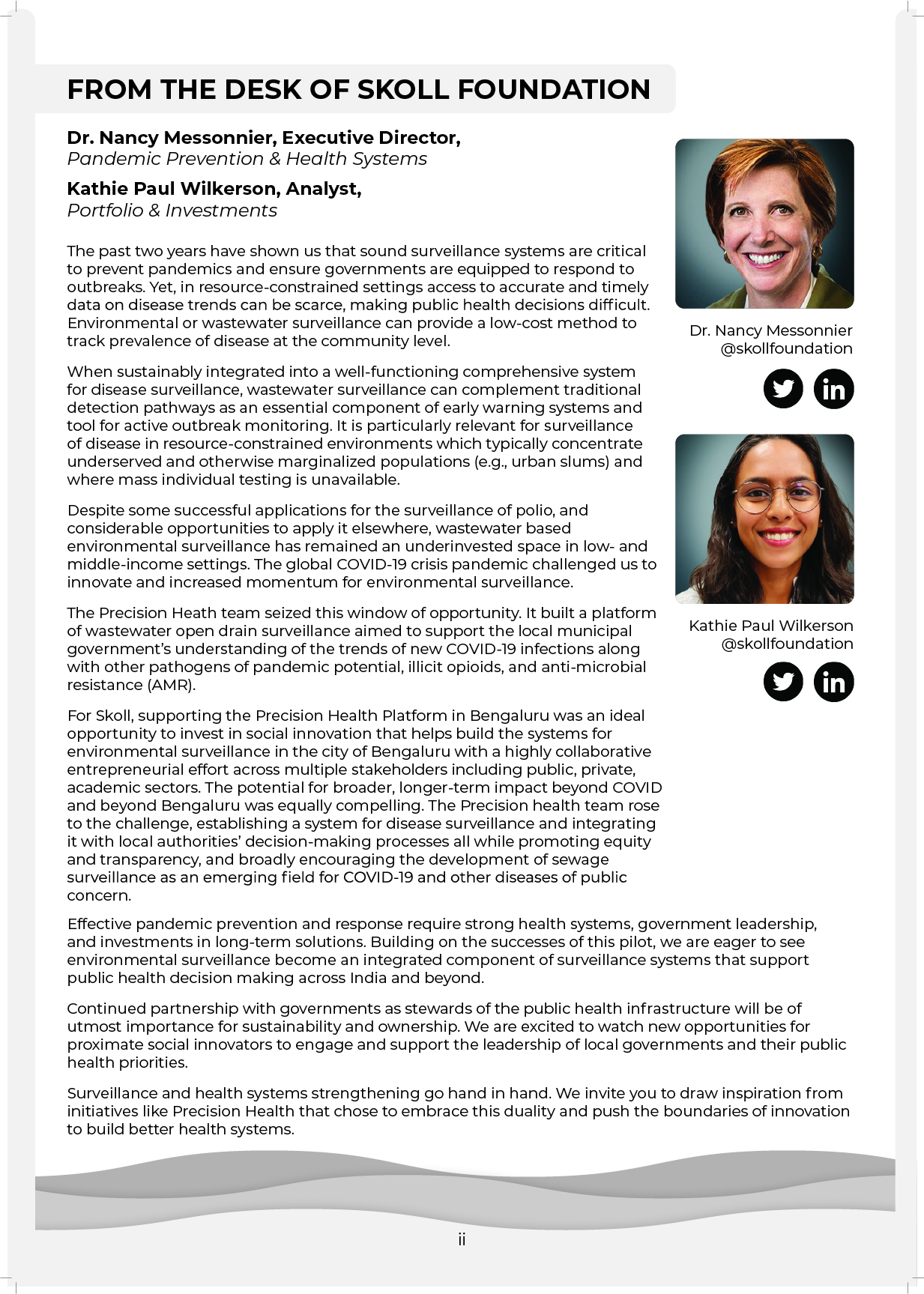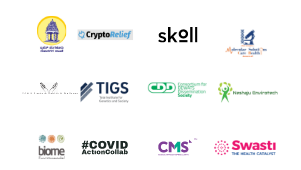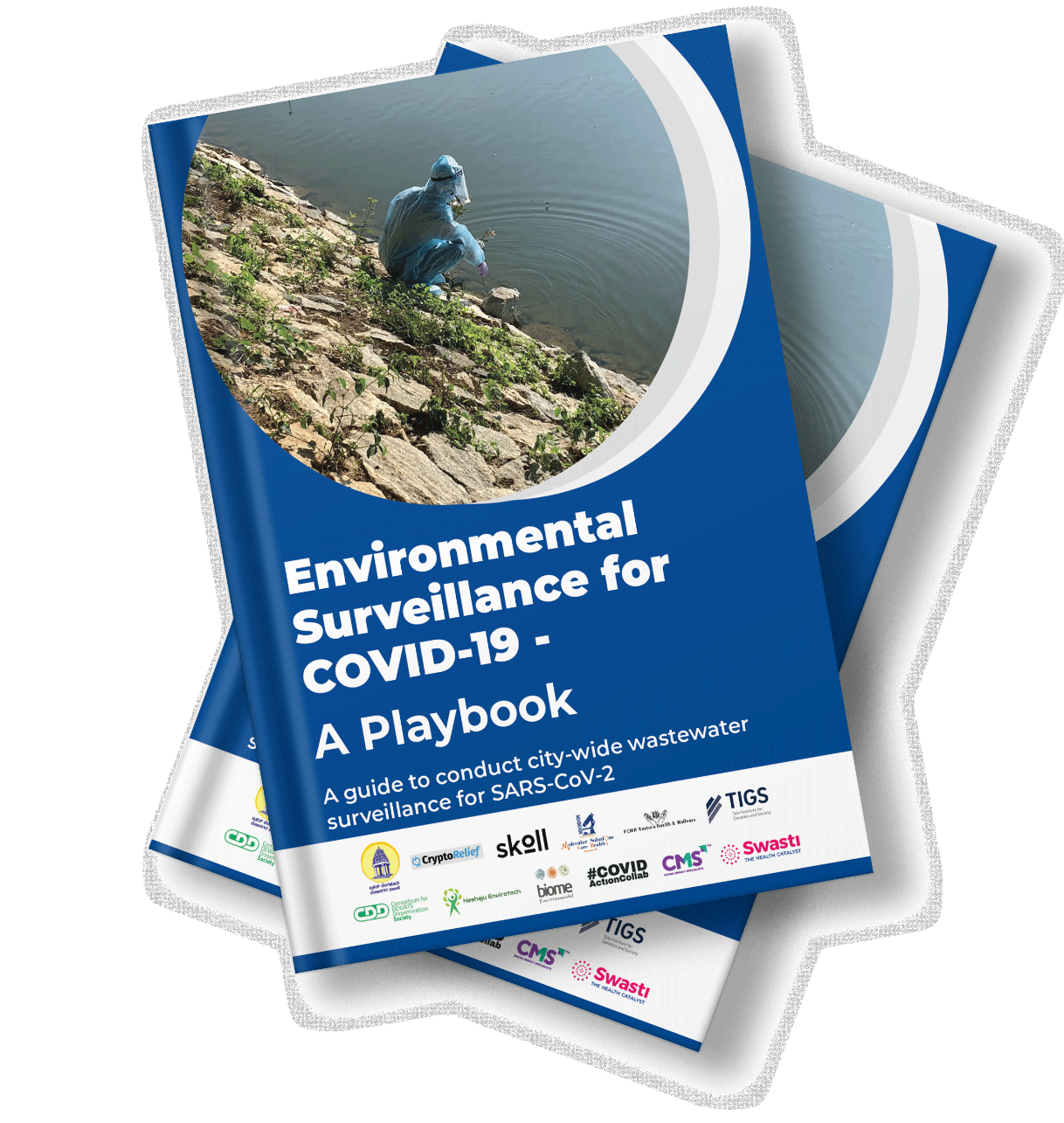



What is a playbook?
A playbook includes "process workflows, standard operating
procedures, and cultural values that shape a consistant
response-the play." it borrows some aristotelian elements of the
play -
Plot - The arrangement of events or incidents on the stage. The plot is composed of "clearly defined problems for characters to solve."
Character - The agents of the plot. the people
Theme - The reason for the play. The purpose
Foreword
From the Desk of Skoll Foundation
Introduction

Without a robust surveillance system, public health response is largely reactive and not preventive and proactive. This leads to inefficient clogged supply chains at its least and lives lost at its worse. The public health infrastructure while in continued development, has gaps in the access of healthcare, health financing and overall health infrastructure. One such gap is observed in public health surveillance. Most of the systems established in public health surveillance are associated with data and information collected from several healthcare records and surveys. However, there are several other avenues which still remain unexplored in the country. As a result, we have limited resources in the public health surveillance system. There are typically 2 pronged issues :
A hurdle in the comprehension of what an environmental surveillance system can and cannot do.
A lack of identification of the diverse players involved for environmental surveillance systems to be meaningful in design and impactful in delivery / outcome
There is a lack of evidence-based decision-making platforms or tools in the public health surveillance system at the city and state level, which may facilitate better control measures of disease spread in the case of outbreaks. As a result, public health response remains pigeonholed and dependent on theoretical predictive indices without an agile component that can help localized response.
Wastewater Surveillance under Precision Pandemic Surveillance Initiative is aimed to support the local municipal administration to understand the trends of COVID infections within the community. It can be utilised as an Early Warning System that indicates an outbreak by detecting sentinel from the wastewater
The COVID-19 Wastewater Surveillance Playbook is a guiding document to help organizations to set up and implement the wastewater surveillance system for SARS-CoV-2 virus detection in partnership with local government and other partners.
The playbook outlines the detailed steps required to initiate and conduct wastewater surveillance in any given city. In this playbook you will find
Wastewater surveillance and monitoring system as an effective public health surveillance tool to detect and rack the trends of SARS-CoV-2 in the community
Set of activities conducted for the wastewater surveillance
Checklists, Tips & Tricks, Standard Operating Procedures and Further Reading Links
The playbook divides the entire process into 3 Acts and 4 scenes, which are as follows:



| Role Title | Anchoring Organization / Institution | Local Government (LG) |
|---|---|---|
| Coordination | Orientation and capacity building of partners; Regular updates on insights. | Designation of officials as Point of Contact (PoC) for better communication and coordination with the team. |
| Insights to action | Create and develop better data visualization and interpretation platforms from the obtained data and information to help local governments in faster decision-making and actions on disease control. | Integration of Early Warning System and environmental surveillance with other surveillance tools for better evidence based decision making |
| Communication | Create and develop communication tools to avoid misinterpretation and misleads from the data and dashboard. | Set up and include the initiative members in regular dialogues for updates and insights from the initiative |
| Learning | Create and develop learning platforms on environmental surveillance hosting and organizing through webinars, seminars and workshops. | Create suitable conditions and climate for the Precision Health platform to be used for other infectious diseases and use cases in multiple domains. |
| Sustenance and flexibility | Create advocacy channels for the platform in the city which can be utilized by other sectoral works. | Linking the platform with other departments to support intersectoral initiatives. |
| Research | Create advocacy channels for the platform in the city which can be utilized by other sectoral works. | Support research works in the field of environmental surveillance through inviting global researchers. |